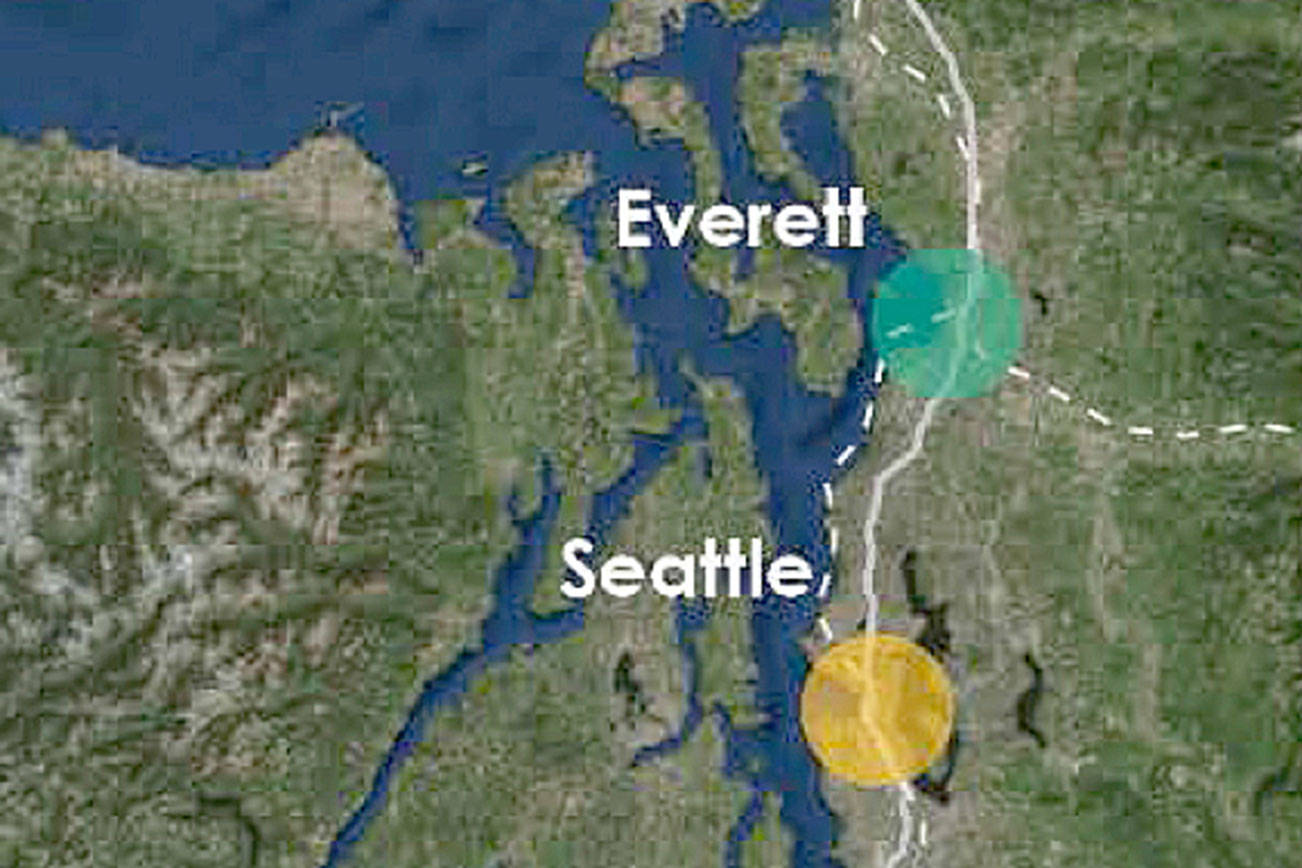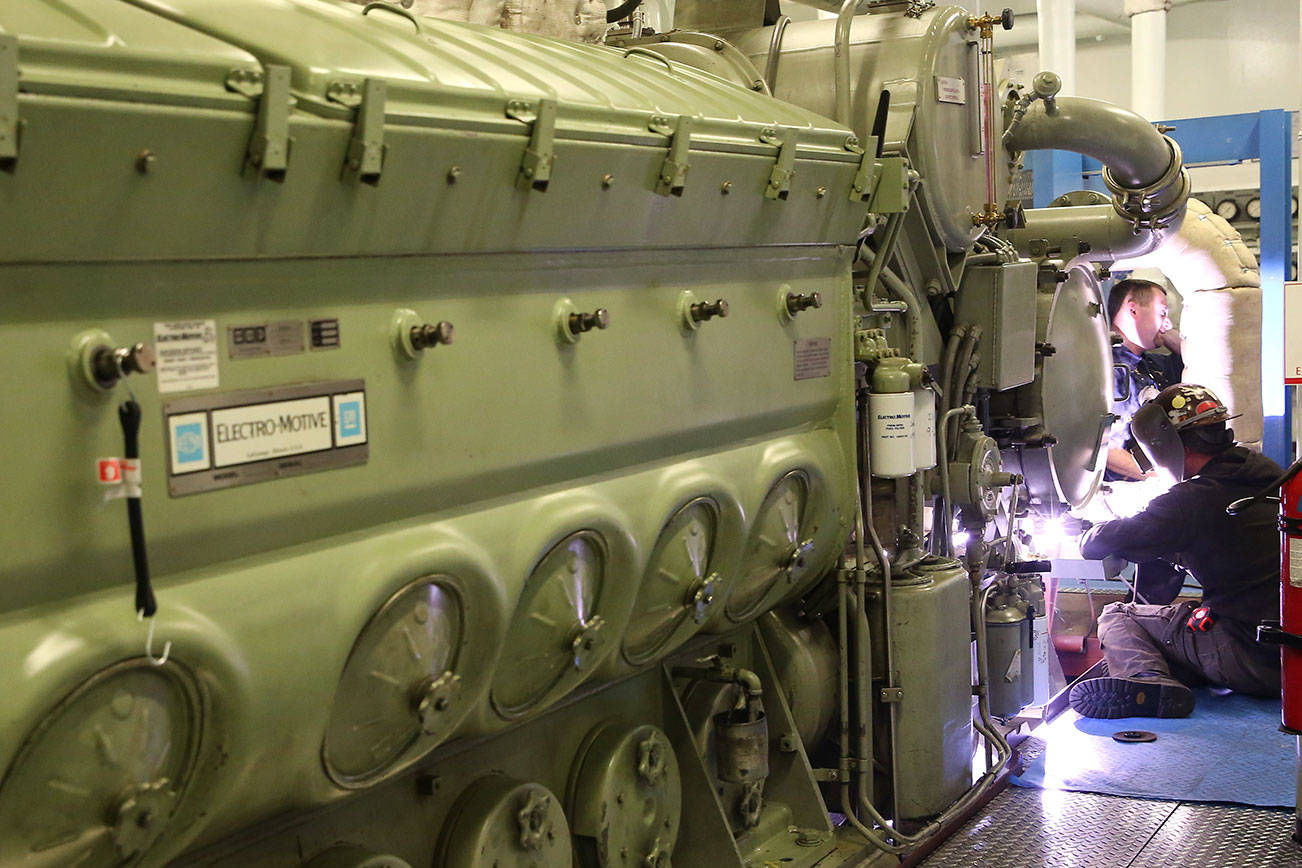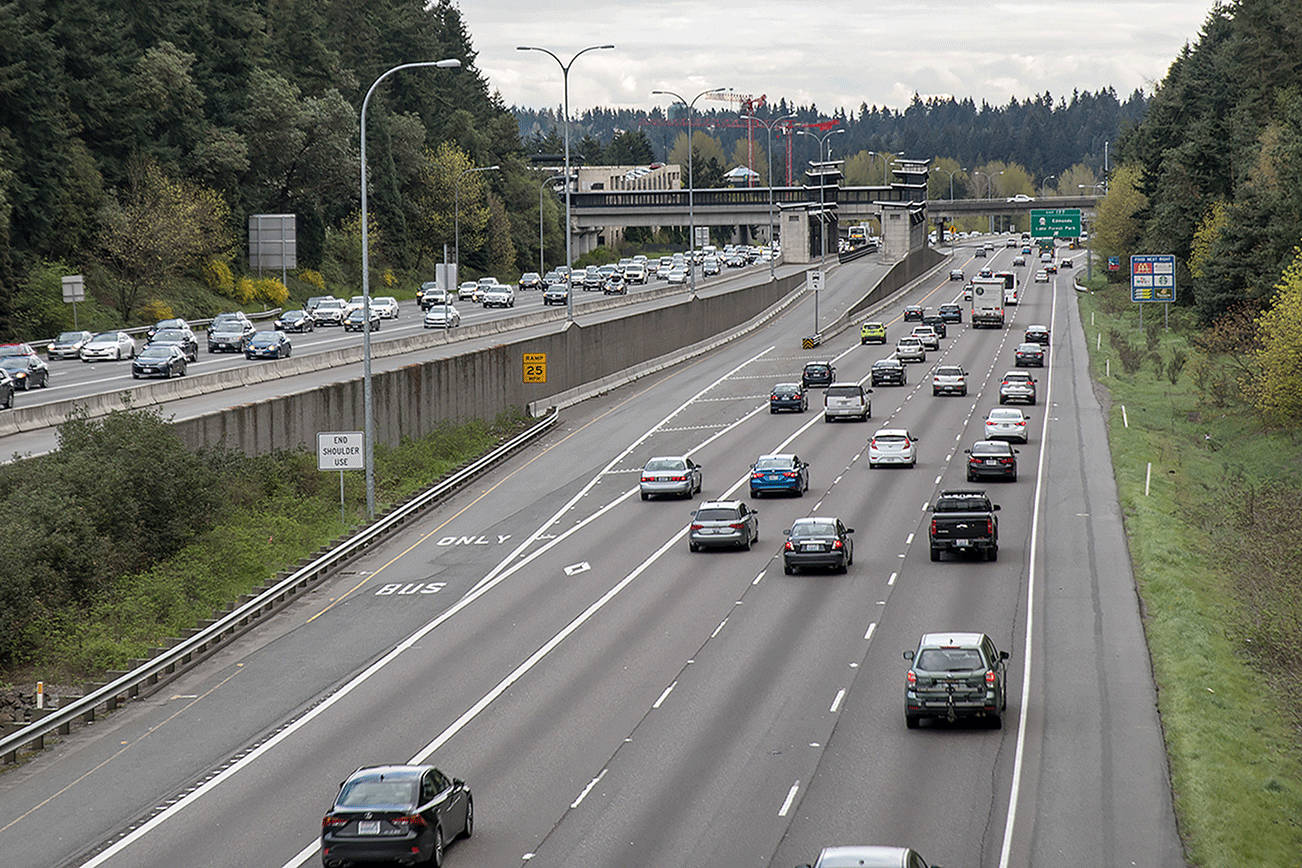OLYMPIA — The state Department of Transportation is making a case for high-speed rail that would move riders from Seattle to Vancouver, British Columbia, and Seattle to Portland each in under an hour.
An ultra-high-speed rail network would yield economic benefits, decrease greenhouse gas emissions and reduce travel times between cities, according to a new report out this week. The system would travel from Portland to Vancouver via Seattle, with several potential stops in between including Everett.
“It’s really like building another I-5, only one that is faster, more reliable, safer and more environmentally friendly,” said Janet Matkin, a spokesperson for WSDOT.
The trains would run at speeds of about 220 mph resulting in times comparable to air travel, and much faster than driving, according to data in the report.
To achieve the high speeds, the all-electric project would run on its own track, both elevated and underground, and have no at-grade road crossings. Amtrak’s Cascades rail service, which runs from Vancouver to Eugene, Oregon, shares a track with freight and Sounder trains.
The study suggests the line could carry 21 to 30 round trips a day as well as offer an express service with stops only in Vancouver, Seattle and Portland and an eight-stop route that could run periodically throughout the day with stations in Surrey, Bellingham, Everett, Tacoma, Olympia and Longview. The added stops would not add significant time, Matkin said.
The study included several potential route alignments.
The project is estimated to cost up to $42 billion and attract as many as 3 million riders a year, taking cars off the road and reducing regional plane trips. Fares could potentially cover operational costs by 2055, which is very rare for public transportation, said Matkin.
The cost of the high-speed network would be less than expanding I-5, which would cost about $108 billion to add a lane in each direction through the state, the report argues.
The study “provides even greater confidence that an ultra-high-speed ground transportation system in the Pacific Northwest is worth the investment,” Gov. Jay Inslee said in a statement accompanying the report.
If ultimately approved, work could begin on the project within a decade.
“The study calls for a very ambitious timeline to start construction in eight years,” Matkin said.
Whether that’s possible depends on lots of factors, including funding and the environmental review process, she added.
“I don’t see that happening,” state Sen. Steve Hobbs, D-Lake Stevens and chair of the Senate Transportation Committee, said of the ambitious schedule.
The $42 billion price tag sticks out to him.
It can’t be borne by the state, it needs to be in partnership with the private market, Hobbs said.
“There needs to be more analysis, especially on the financial part,” he said.
The study concludes that both private and public investment is needed for the project.
WSDOT was joined by the Oregon Department of Transportation, the Province of British Columbia, and Microsoft in the $1.5 million feasibility study, of which WSDOT paid half.
The Legislature has committed another $224,000 to study how the project would be governed, according to WSDOT. Oregon and British Columbia also committed $225,000 each for further project analysis.
It makes sense to study high-speed rail, said Paul Roberts, Everett City Council member and Sound Transit Board member.
“It’s a sort of thing that is worth a critical look,” he said. “We are in a world where we can’t just build more roads.”
Lizz Giordano: 425-374-4165; egiordano@heraldnet.com; Twitter: @lizzgior.






